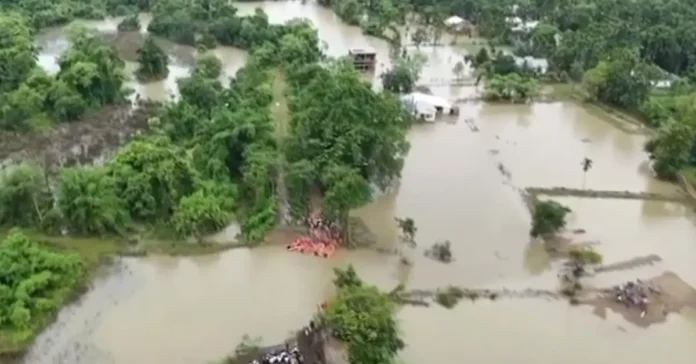Northeast India is reeling from a series of severe natural calamities, including floods, landslides, and storms, which have caused widespread destruction across the region. Assam has been hit the hardest, with the latest reports indicating a death toll of 109. The floods have severely impacted over 5,97,600 people across various districts, leaving many areas submerged and communities in distress.
The torrential rains have led to rivers overflowing, inundating vast tracts of land and forcing residents to evacuate their homes. Landslides triggered by the heavy rains have blocked roads and cut off access to several remote areas. The destruction has disrupted daily life, with many schools, businesses, and government offices closed.
The state government has mobilized resources to provide relief to the affected populations. Emergency teams are working to deliver essential supplies, including food, water, and medical aid. Authorities have set up temporary shelters for displaced families, but the scale of the disaster has overwhelmed local capacities. The state government has also called for assistance from neighboring states and the central government to manage the crisis effectively.
In addition to Assam, other northeastern states are also facing challenges due to the extreme weather conditions. The heavy rains and storms have caused similar problems in Manipur, Meghalaya, and Arunachal Pradesh, though Assam remains the most severely affected. The situation has prompted warnings from meteorological departments about the potential for further adverse weather.
The natural calamities have highlighted the region’s vulnerability to extreme weather events, exacerbated by the monsoon season. The combined impact of floods, landslides, and storms has not only led to loss of life but also extensive damage to infrastructure, agriculture, and homes.
As the affected states continue to grapple with the aftermath of these disasters, the focus remains on providing immediate relief and assessing long-term recovery needs. The current situation underscores the need for better preparedness and resilient infrastructure to mitigate the impact of such natural calamities in the future.




